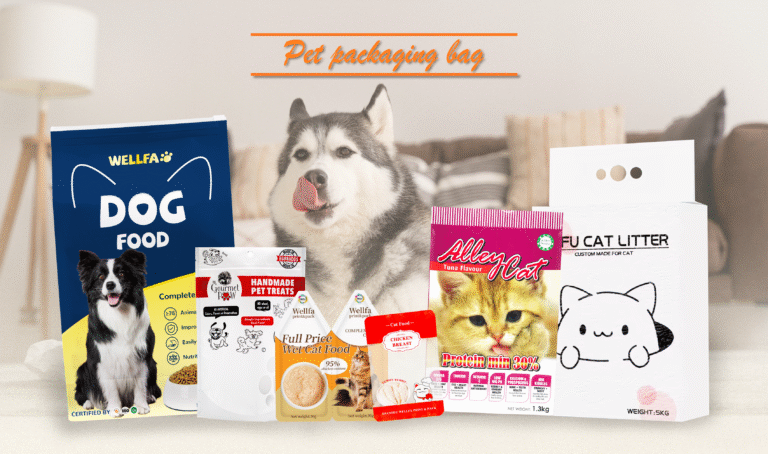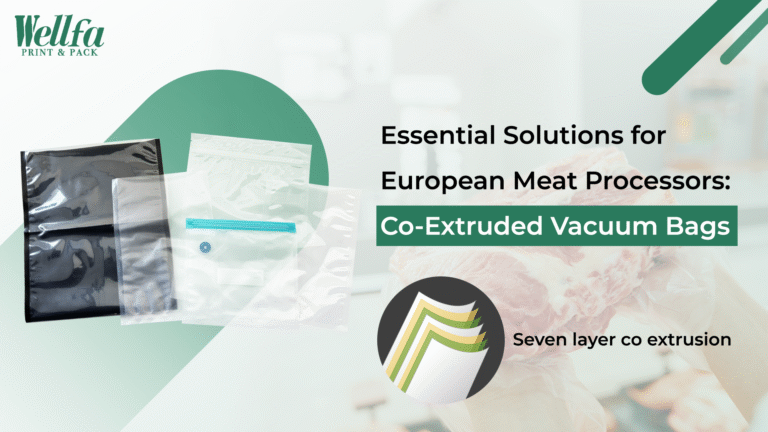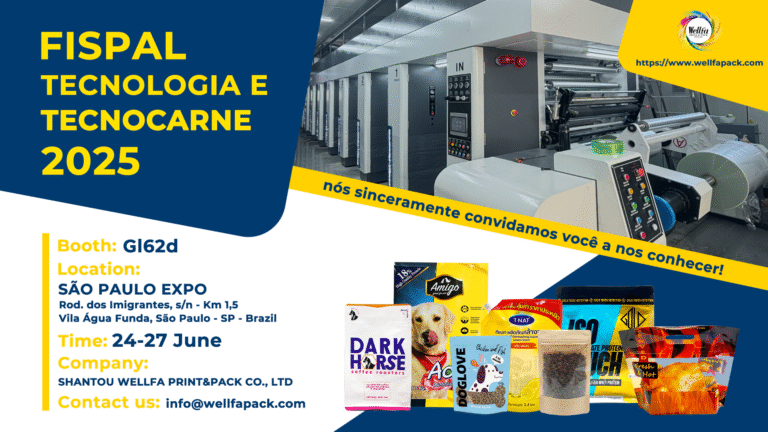Por que as sacolas de vácuo co-extrudadas são melhores para embalagens a vácuo?

Índice
Co-extruded vacuum bags are ideal for Better for Embalagem a vácuo because they work well with different types of vacuum machines. Their strong and flexible material helps prevent punctures, solving many common vacuum sealing problems.
Co-extruded vacuum bags are widely used in South America for meat packaging. These bags work well to keep meat fresh, but sometimes users face problems with vacuum sealing. Here are some common issues and simple solutions to help you get the best results.
Solving 6 Key Better for Vacuum Packaging Issues: Cut Product Loss by 30%
1. Vacuum Machine Compatibility
Problem: Some users have small, home vacuum machines, which may not work well for packaging meat.
Solution: Co-extruded vacuum bags can be used with both small home machines and larger commercial machines. They are easy to use with low-power machines, so you can get great results no matter the size and type of your vacuum machine.

2. Oil or Moisture on the Sealing Area
Problem: If there are oil stains or moisture on the sealing area of the bag, the heat seal may not form properly, leading to a weak or broken seal.
Solution: Before sealing, always ensure that the sealing area of the bag is clean and dry. If necessary, wipe the sealing area with a dry cloth or paper towel to remove any moisture or oil. Properly cleaning the machine and ensuring that the sealing bars are free of any residue can also help prevent sealing issues.

3. Machine Overheating
Problem: If the vacuum machine is used frequently without allowing it to cool down, the heat sealing part can become too hot. This can cause the bag to seal too early before the air is fully removed, resulting in incomplete vacuum sealing
Solution: Allow the vacuum machine to cool down between uses. If you are packaging many products at once, take breaks to prevent the machine from overheating. You can also adjust the sealing temperature to prevent it from getting too hot and interfering with the vacuum process.

4. Bag Puncture from Hard or Bone-In Products
Problem: When sealing products that are tough or have bones, such as frozen meat or bone-in cuts, the thin vacuum bag may get punctured, causing air leaks and preventing proper vacuum sealing.
Solution: For products with sharp edges or bones, use thicker vacuum bags to prevent punctures. Co-extruded vacuum bags are designed to resist punctures, making them ideal for packaging tough or bone-in meat. If you are using thinner bags, consider double-bagging to provide extra protection.

5.High Humidity or Temperature
Problem: High humidity or very hot temperatures can make vacuum sealing harder.
Solution: Store the bags in a cool, dry place. Before sealing, make sure the bags are dry to avoid problems with vacuuming.

6.Not Enough Air Removal
Problem: If there is still air in the bag, the meat might spoil faster or get freezer burn.
Solution: Co-extruded vacuum bags help remove air more effectively. If the problem continues, check that your vacuum machine has enough suction power and is working properly.

Call to Action
Using the right Better for Vacuum Packaging can make a big difference in packaging quality and efficiency. At Wellfapack, we offer high-quality co-extruded vacuum bags that work with different vacuum machines and help solve common sealing issues.
If you’re looking for reliable vacuum packaging solutions, Contate-nos today! We are happy to provide product catalogs and free samples so you can experience the quality of our bags firsthand. Let us help you find the best packaging solution for your needs!





